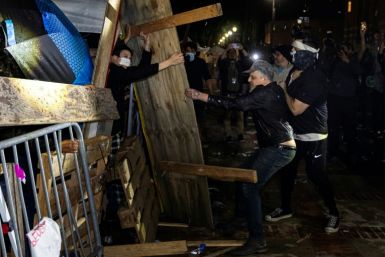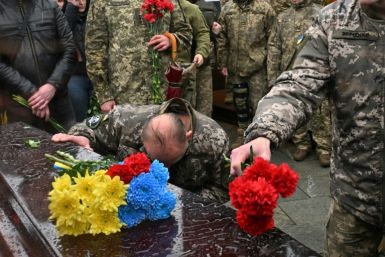NATO Approves Military Upgrade: Hints At Relooking Nuclear Option Following Russia’s Repeated ‘Nuclear Option’ Chant

Rejecting charges of triggering Cold War-style arms race with Russia, the U.S. and NATO allies decided to upgrade military resources to deliver quick response to any attack on an alliance member with better equipment and more firepower. "We stand united in the way we are addressing the challenges we face," NATO Secretary-General Jens Stoltenberg said.
The meeting held at NATO headquarters in Brussels, had the presence of U.S. Defense Secretary Ash Carter and counterparts from Canada and NATO member nations. Besides the increase in the strength of the alliance's Response Force three times from 13,000 at the start of 2015, to as many as 40,000, NATO also decided to beef up air, sea and special forces by adding a highly mobile, multinational "spearhead" brigade of 5,000 ground troops.
This is to help in reinforcing deployment within 48 hours, if any NATO member is assaulted. NATO chief Stoltenberg told a news conference that detailed plans to confront a crisis and joint logistics headquarters will be set up to fast track NATO force deployment and supplies with greater speed.
Russian Threat
Stoltenberg said the revamp of the alliance is not to threaten any country but it is a precaution and defensive posture, necessitated by Russia's actions like annexation of Crimea and military incursion in eastern Ukraine. NATO is also uncomfortable at Russia’s escalating rhetoric about using nuclear weapons. "We do not seek confrontation. And we do not want a new arms race," Stoltenberg said and added that the priority is to keep NATO member nations safe and being prepared.
Russia is also increasing its military capacities and mulling induction of 40 intercontinental ballistic missiles. Six months ago, it flexed muscle by airlifting state-of-the art Iskander missiles to the Baltic base of Kaliningrad.
Nuclear Option
Pentagon chief Ash Carter announced in Estonia that the U.S. will deliver 250 tanks, armored vehicles and military equipment across NATO's easternmost members, facing threat from Russia. One more outcome of the NATO parleys was a subtle hint at re-evaluating its nuclear weapons strategy in response to tension with Russia over Ukraine. According to sources, revised NATO nuclear policy will not be short of a tit-for-tat exchange with Russia.
On NATO’s response, an official said, “deterrence, based on an appropriate mix of nuclear, conventional and missile defence capabilities will be the core element of overall NATO strategy.” Though details of nuclear discussions are internal, sensitive and classified, NATO is continuously taking stock of all aspects of Russia’s military activities including the nuclear rhetoric.
(For feedback/comments, contact the writer at k.kumar@ibtimes.com.au)






